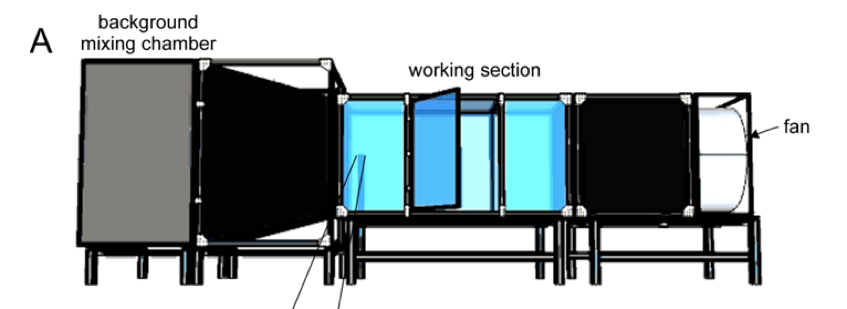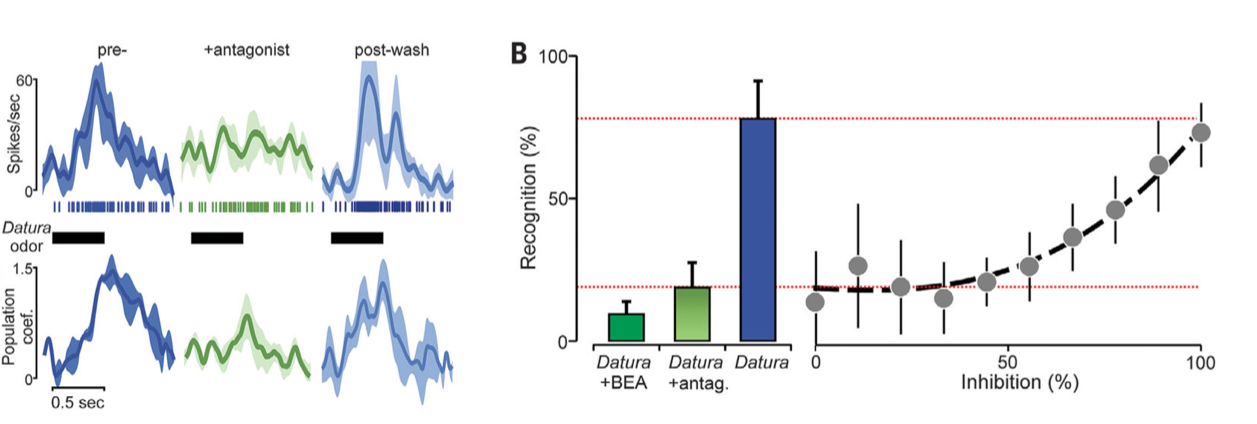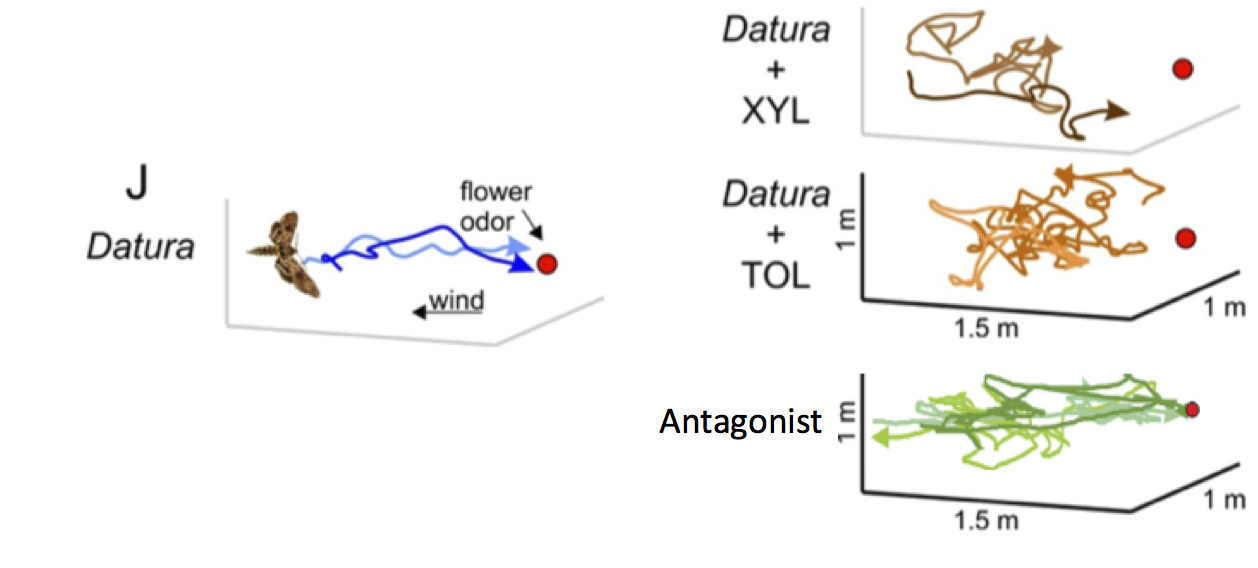Flower discrimination by pollinators in a dynamic chemical environment
Science 2014
J. Riffell, E. Shlizerman, E. Sanders, L. Abrell, B. Medina, A. J. Hinterwirth, J. N. Kutz

credit: Floris van Breugal
Summary
Pollinators use their sense of smell to locate flowers from long distances, but little is known about how they are able to discriminate their target odor from a mélange of other natural and anthropogenic odors. Here, we measured the plume from Datura wrightii flowers, a food resource for Manduca sexta moths, and show that the scent was dynamic and rapidly embedded among background odors. The moth’s ability to track the odor was heavily dependent on the background of other odors, including the scents from neighboring vegetation and exhaust emissions from cars. By influencing the balance of excitation and inhibition in the antennal lobe (the moth’s olfactory lobe), background odors altered the neuronal representation of the target odor and the ability of the moth to track the odor. These results show that the mix of odors present in the environment influences the pollinator’s olfactory ability.Project Materials
Paper*, Supplementary Material*, Science perspective article, Images, YouTube videosScience, June 27, 2014.
* This is the authors' version of the work. It is posted here by permission of the AAAS for personal use, not for redistribution. The definitive version is published in Science Journal Title 344#, (27 June 2014), doi: 10.1126/science.1251041
Press
Newspapers, Radio and Online Media
UW news | Science News | The Daily UW | NY Times | BBC Nature | Daily Mail UK | KPLU (NPR) | Slashdot | Reuters | Russia 24 | Tech Times | Climate Progress | Canada Journal | Frankfurter AZ ...TV News
KIRO 7Q13 FOX NEWS
Results
Insects must successfully discriminate and locate biologically important scents, such as those emitted by food, mates, or hosts, from within a complex mixture. How does the insect olfactory system accomplish this task?Our results show that olfactory background that is chemically similar to the polinated flower (plant volatiles and other anthropogenic in origin, such as toluene and p-xylene found exhaust fumes for example) can have important effects on insects ability to locate an odor source.
Behavioral Results
To determine how does the insect olfactory system accomplish odor discrimination task we used a wind tunnel and a computer-controlled odor-stimulus system to test responses of Manduca sexta moths to a flower odor at different frequencies (1 to 20 Hz) and embedded in different odor backgrounds.

Moths exhibited the strongest response to odor pulses of 1 Hz, while frequencies higher than 1 to 2 Hz resulted in behavior similar to that displayed in response to the no-odor controls. Testing the moths’ ability to track the flower-odor plume at a frequency of 1 Hz among a background of different odors, ranging from volatiles that do not occur in the flower odor (nonoverlapping) to those that do, we found that altering the background can significantly modify the ability of the moth to discriminate and track the odor.
Neuronal Processing
Inserting a 16-channel electrode into the moth’s olfactory neuronal processing unit allowed us to examine whether the odor processing neurons changed their activity in response to different odor frequencies and backgrounds.
 To analyze these recordings we developed an odor recognition classifier based on the neural population representation of the flower odor in the multi-variate space and were able to compare the recognition scores between the flower odor at 1 Hz with the flower odor in different backgrounds. This analysis showed similar results to those in the behavioral experiments: High odor frequencies (>5 Hz) and certain backgrounds significantly modified the representation of the flower odor, and hence altered the neural perception of the flower.
To analyze these recordings we developed an odor recognition classifier based on the neural population representation of the flower odor in the multi-variate space and were able to compare the recognition scores between the flower odor at 1 Hz with the flower odor in different backgrounds. This analysis showed similar results to those in the behavioral experiments: High odor frequencies (>5 Hz) and certain backgrounds significantly modified the representation of the flower odor, and hence altered the neural perception of the flower.
 To determine how altering the odor input into the olfactory neural circuit (i.e., the composition and ratio of volatiles) also modified the neural circuitry (balance of excitation and inhibition) we pharmacologically manipulated the inhibition by superfusing a GABA-receptor antagonist. We found that when the GABA-receptor antagonist was superfused, neurons showed a decreased ability to encode the pulses of odor, and the odor representation was significantly modified in a manner similar to that which occurred with the overlapping background (left). These results were further validated by a computational model that allowed us to simulate different levels of inhibition (right).
To determine how altering the odor input into the olfactory neural circuit (i.e., the composition and ratio of volatiles) also modified the neural circuitry (balance of excitation and inhibition) we pharmacologically manipulated the inhibition by superfusing a GABA-receptor antagonist. We found that when the GABA-receptor antagonist was superfused, neurons showed a decreased ability to encode the pulses of odor, and the odor representation was significantly modified in a manner similar to that which occurred with the overlapping background (left). These results were further validated by a computational model that allowed us to simulate different levels of inhibition (right).


credit: Kiley Riffell
Contact
For more information please contact:Jeff Riffell (Riffell Lab, PI) and Eli Shlizerman (Data-Driven Dynamical Systems Group, PI)